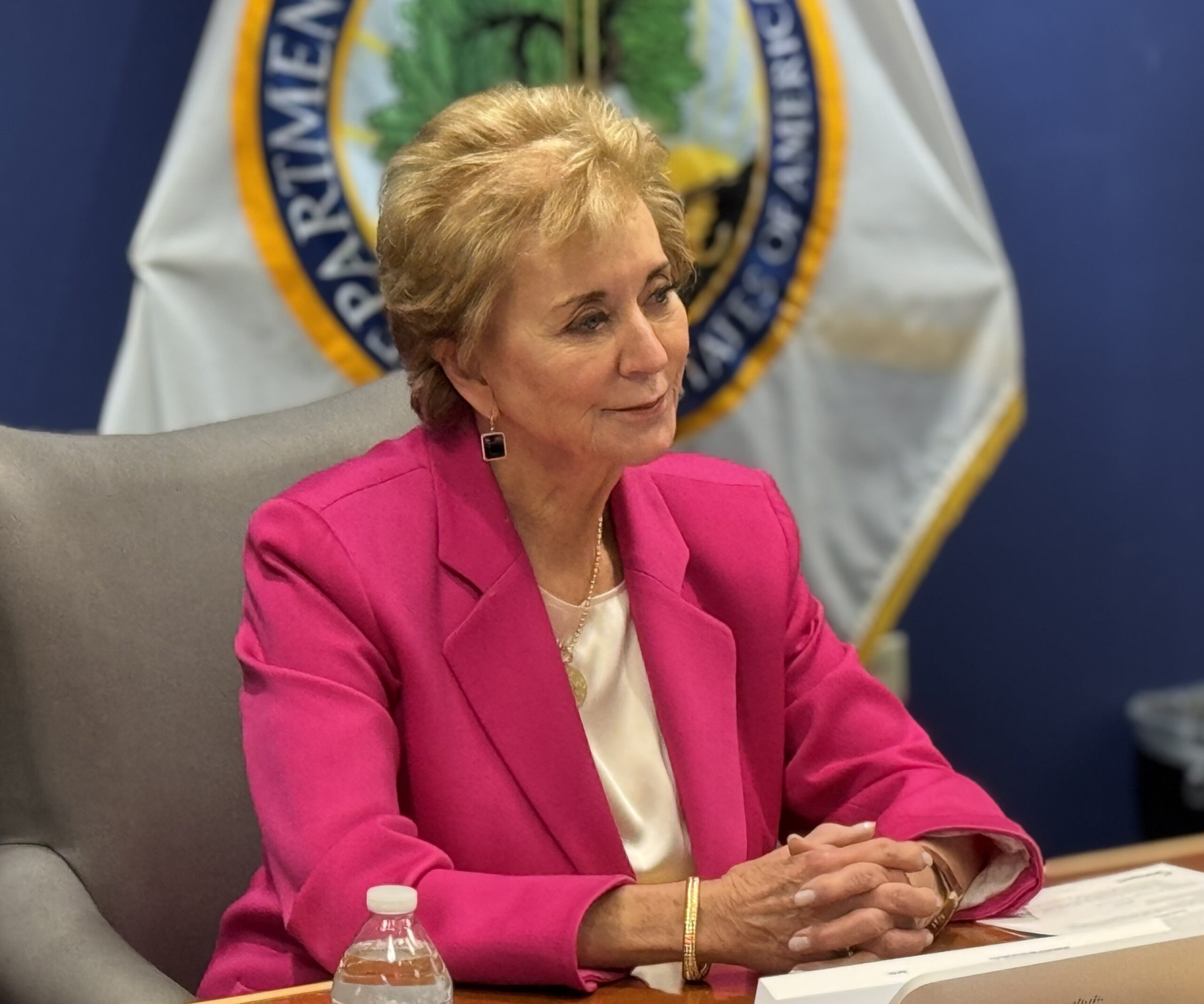The Education Lesson from COVID Lockdowns: School Choice Is Imperative for Every Child

In the fall of 2020, parents found new ways to help their children learn amid uncertain government plans for school re-openings. The defining feature of the new education landscape is that many families are no longer waiting for school-district solutions. They are deciding how and where their children learn when assigned schools are closed, including finding — or creating — new learning opportunities themselves.
Research on the economic impact of school closures underscores just how important it is to continue in-person learning. A Barron’s report estimates that school closures could result in $700 billion in lost revenue, while other estimates show that K–12 students should anticipate a lifetime loss of 3 percent of their incomes due to the pandemic-induced school closures.
But not all students stopped learning in when the shutdowns began. Parent and student choices during the pandemic are changing the defining features of assigned-school education offerings, increasing private school opportunities, and adding new learning options like pods and micro-schools. Members of three distinct groups — (1) the traditional public school sector, (2) the charter school and private school sector, and (3) parents — faced the same pandemic and responded in measurably different ways.
As result of these pandemic-induced changes, state policymakers need to re-examine traditional K–12 schooling policies, specifically the residential assignment model of public education — a structural barrier that often traps students in failing schools and has limited educational opportunity for children from low and middle-income families.
In larger public school districts, enrollment figures from the beginning of the 2020–2021 school year show how the pandemic caused a measurable shift in attendance between public, private, and home learning options, especially among young students.
The policy implications of this shift in enrollment are twofold: First, traditional school assignment policies should no longer be necessary for parents and students. Parents should not have to wait for districts to re-open buildings for in-person learning, or for a teacher strike to end, for example, before seeking alternative learning options. Second, state lawmakers should enact fiscally responsible school funding measures that do not hold districts harmless when parents seek other opportunities.
While year-over-year enrollment numbers will not be available until the end of the 2020–2021 school year, according to the New York Times, Massachusetts school officials reported a drop in enrollment of 4 percent statewide at the beginning of the 2020–2021 school year. New York City, home to the nation’s largest school district, had 3 percent fewer students enrolled. The Times reported similar figures from Montana, Wisconsin, Missouri, and North Carolina.
Data from large school districts nationwide finds similar trends. In Arizona’s largest school district, Mesa Unified, the enrollment drop was larger in the younger grades than in high school, with a 9.6 percent decrease in elementary school (previous year-to-year changes averaged a 1.7 percent decrease) and a 16.8 percent decrease in kindergarten enrollment. Education officials in Broward County, Florida; Houston, and other large school systems reported similar changes last fall. These changes are attracting attention from several quarters: Just this week headlines in The Economist and the Wall Street Journal cited the issue of falling enrollment, while the Times covered the topic last fall.
Figures from state organizations support these survey numbers. The Vermont Department of Education reported last summer that homeschooling enrollment had increased by 75 percent over the previous year. The Texas Homeschool Coalition reported a 400 percent increase in families withdrawing from state public schools through the coalition’s website to homeschool in August 2020 compared to August 2019.
Such figures demonstrate that parental dissatisfaction with extended periods of virtual learning, along with school districts’ inability to maintain contact with thousands of students in a virtual environment, are resulting in school-attendance changes. In New Mexico, school officials reported that 12,000 students enrolled in the last school year were unaccounted for this fall. In neighboring Arizona, some 50,000 students “vanished” from Arizona’s public district and charter schools, according to a review of preliminary enrollment data by local media. That school districts simply “lost” students should trouble parents and policymakers everywhere.
Private school leaders were anticipating the worst at the onset of the pandemic. Yet while here, too, final calculations will not be available until the end of the current school year, news reports from a wide range of states point to an increase in parental interest. In New Mexico, private schools in Albuquerque reported waiting lists at the beginning of the 2020–2021 school year, with the Albuquerque Christian Academy telling local media that enrollment is especially higher in elementary grades. Similar reports, including stories of newly formed waiting lists and parents telling private school leaders that they are not satisfied with district school learning plans, have surfaced in Alabama, Massachusetts, Minnesota, New Hampshire, New York, South Carolina, Washington State, and Detroit.
For parents who cannot afford private school tuition, governors in three states have created new K–12 scholarship programs, one with an added provision that allows parents to purchase tech equipment to help families still facing virtual or hybrid school scenarios. Oklahoma Gov. Kevin Stitt created “digital wallet grants,” which will allow 5,000 students from low-income families to purchase “curriculum content, tutoring services and/or technology.” Thus the pandemic has further ensconced the policy idea that private education does not just mean attendance at a specific school.
As private schools experience a surge in parent interest at the beginning of the 2020–2021 school year and lawmakers make new scholarship opportunities available, one additional learning option has dominated the headlines and demonstrates that parents are taking matters into their own hands: learning pods. One survey in January 2021 estimates that as many as 3 million children could be using pods, nearly the same as the number of children attending charter schools across the U.S.
These pods, a dystopian-sounding name for a small group of families who hire a teacher to educate their children outside a traditional school setting this year, have allowed parents dissatisfied with assigned-school-district attempts at online instruction during the spring to help their children immediately, without waiting for a return to normalcy. In some cases, families hire an educator and chose their own curriculum. In others, families are gathering students in small groups and following a district’s online curriculum.
Next, the pandemic has highlighted the need for policymakers to re-examine traditional “residential assignment” for public education. More than 47 million children attend traditional public schools in the United States, and more than 78 percent attend an assigned district school. Just 20 percent of students attend a public school chosen by their parents. These enrollment trends are a function of the residential assignment model, whereby local school district officials establish attendance zones, assigning students to a public school located in an area that includes their parents’ primary residence.
The extent to which families can select schools is largely determined by the extent to which they can afford to select their neighborhood. Among households with children, half take school district quality into consideration when purchasing a home. The quality and consistency of the education a child received during the pandemic has been dependent on the attendance boundary in which that child’s family lives. That means that in the same state, and even within the same school district, students living in neighboring attendance zones could have had radically different learning experiences.
For example, the 16,519 students in Hanover County, Virginia, had access to full in-person instruction when school resumed in the fall, but the 50,191 students in neighboring Henrico County remained fully remote, with access only to district online learning. That is a pattern that repeats itself in state after state throughout the country.
Separating housing from schooling by eliminating residential assignment practices in the states and attendance zones within districts would increase access to schools and education options of choice that are the right fit for students. It would also represent an important policy change in the post-COVID-19 era, insulating students from disruptions to their education by dramatically expanding the public schools to which they have access, enabling them to more easily transfer into district schools that are providing in-person instruction or remote instruction, according to their preferences.
Families, especially parents in low-income areas that do not have access to technology that makes online classes possible, should not feel trapped in assigned schools when school districts are closed to in-person learning. According to the Pew Research Center, 72 percent of parents in lower-income brackets report being “very” or “somewhat” concerned this fall that their children are “falling behind in school as a result of the disruptions caused by the pandemic.”
For the duration of the pandemic, and the next time unions decide to close schools with strikes, policymakers should immediately lift residential-school-assignment policies so that parents who cannot create new learning options through pods or pay private school tuition can seek out public schools that remain open.
Lindsey M. Burke researches and writes on federal and state education issues as the Will Skillman fellow in education policy at The Heritage Foundation. Read her research.
Jonathan Butcher is a senior policy analyst in The Heritage Foundation’s Center for Education Policy and a senior fellow for the Goldwater Institute and the Beacon Center of Tennessee.
The views expressed in this opinion piece are the author’s own and do not necessarily represent those of The Daily Wire.
The Daily Wire is one of America’s fastest-growing conservative media companies and counter-cultural outlets for news, opinion, and entertainment. Get inside access to The Daily Wire by becoming a member.
" Conservative News Daily does not always share or support the views and opinions expressed here; they are just those of the writer."




